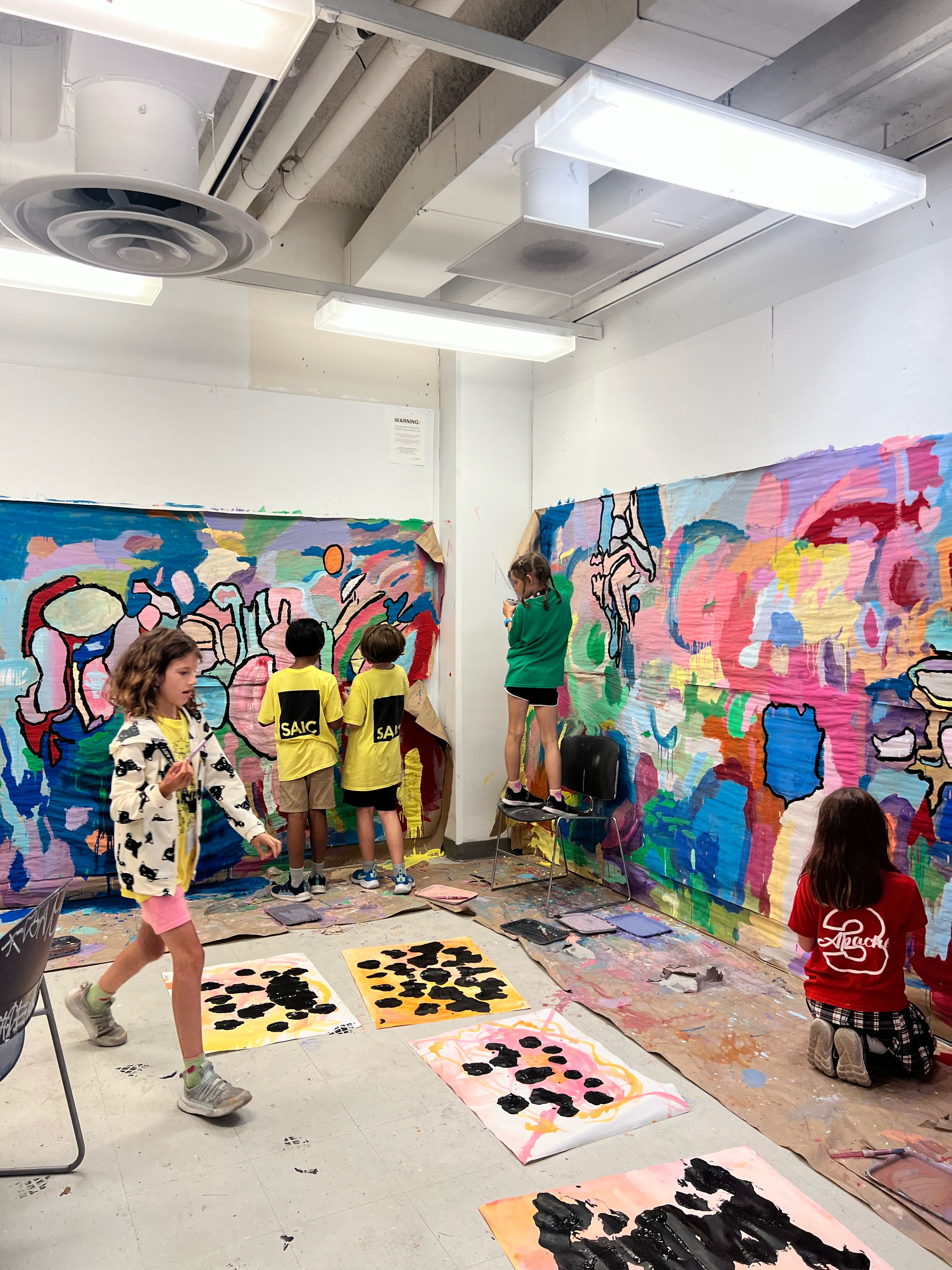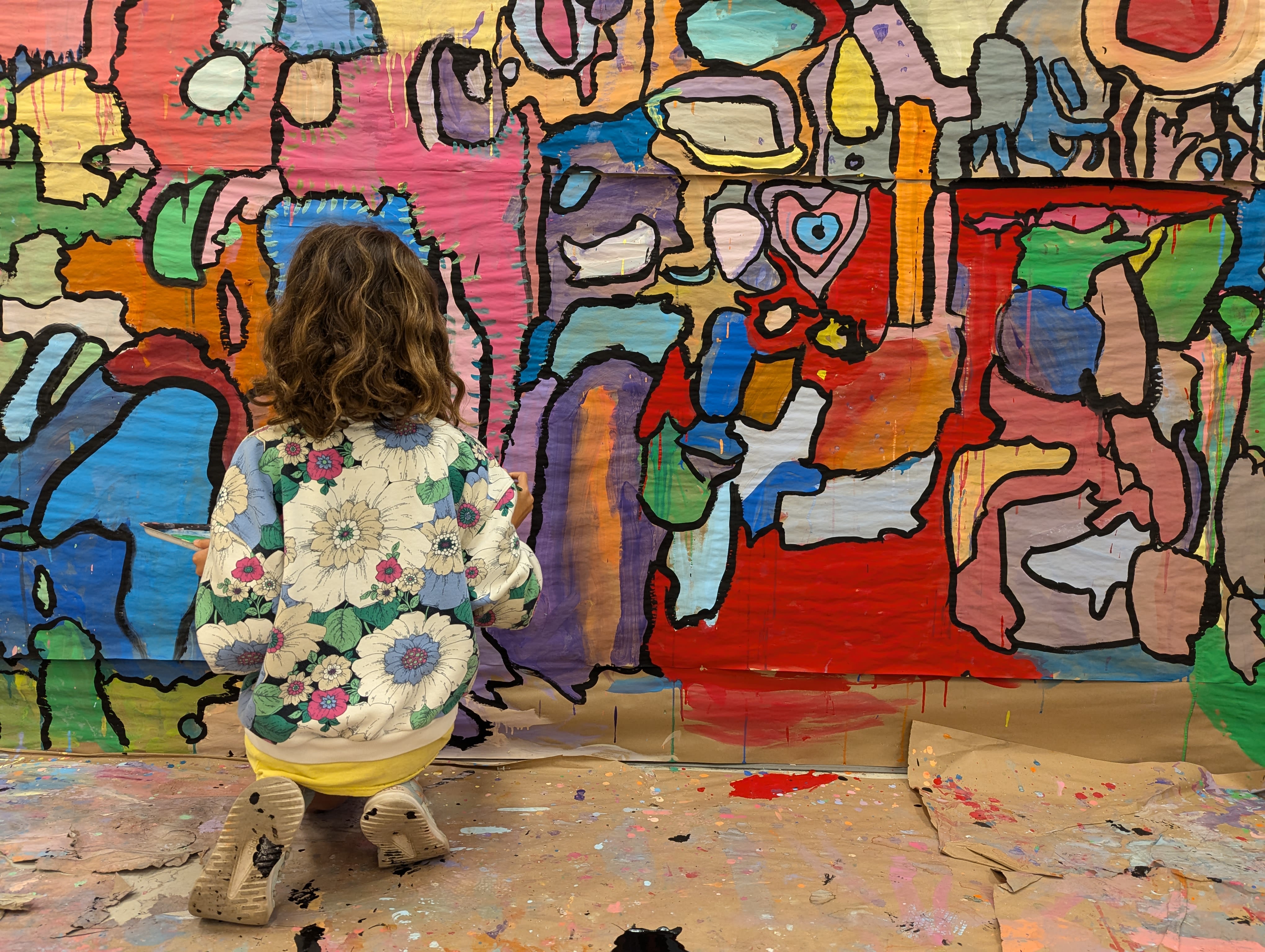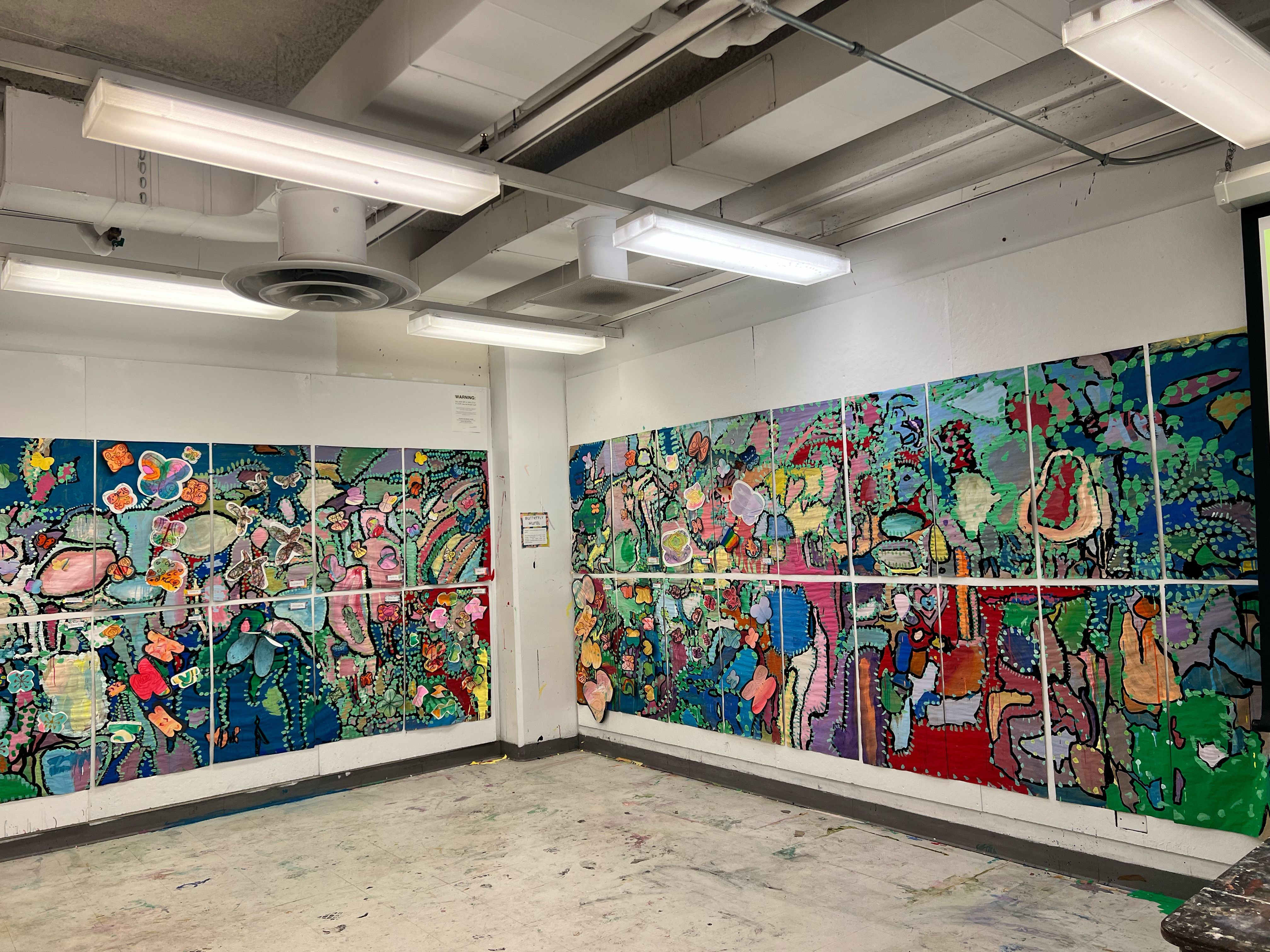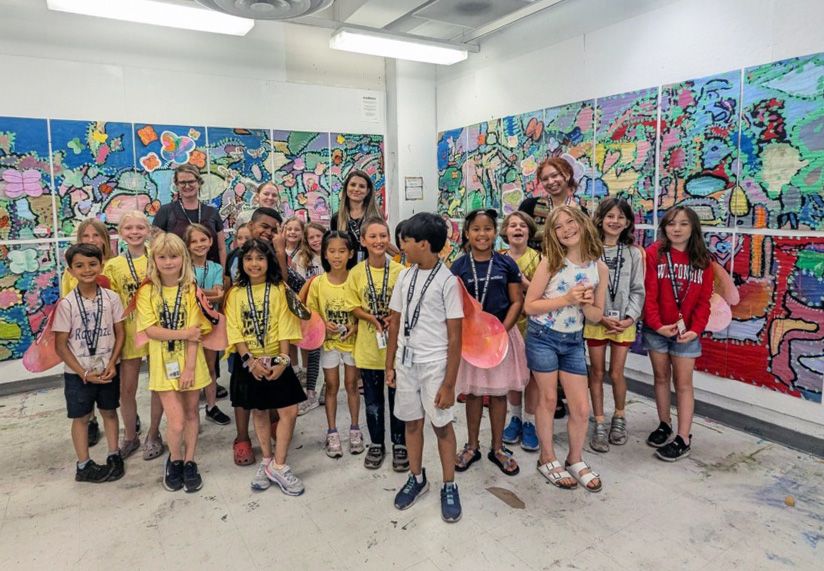The Magic of Murals
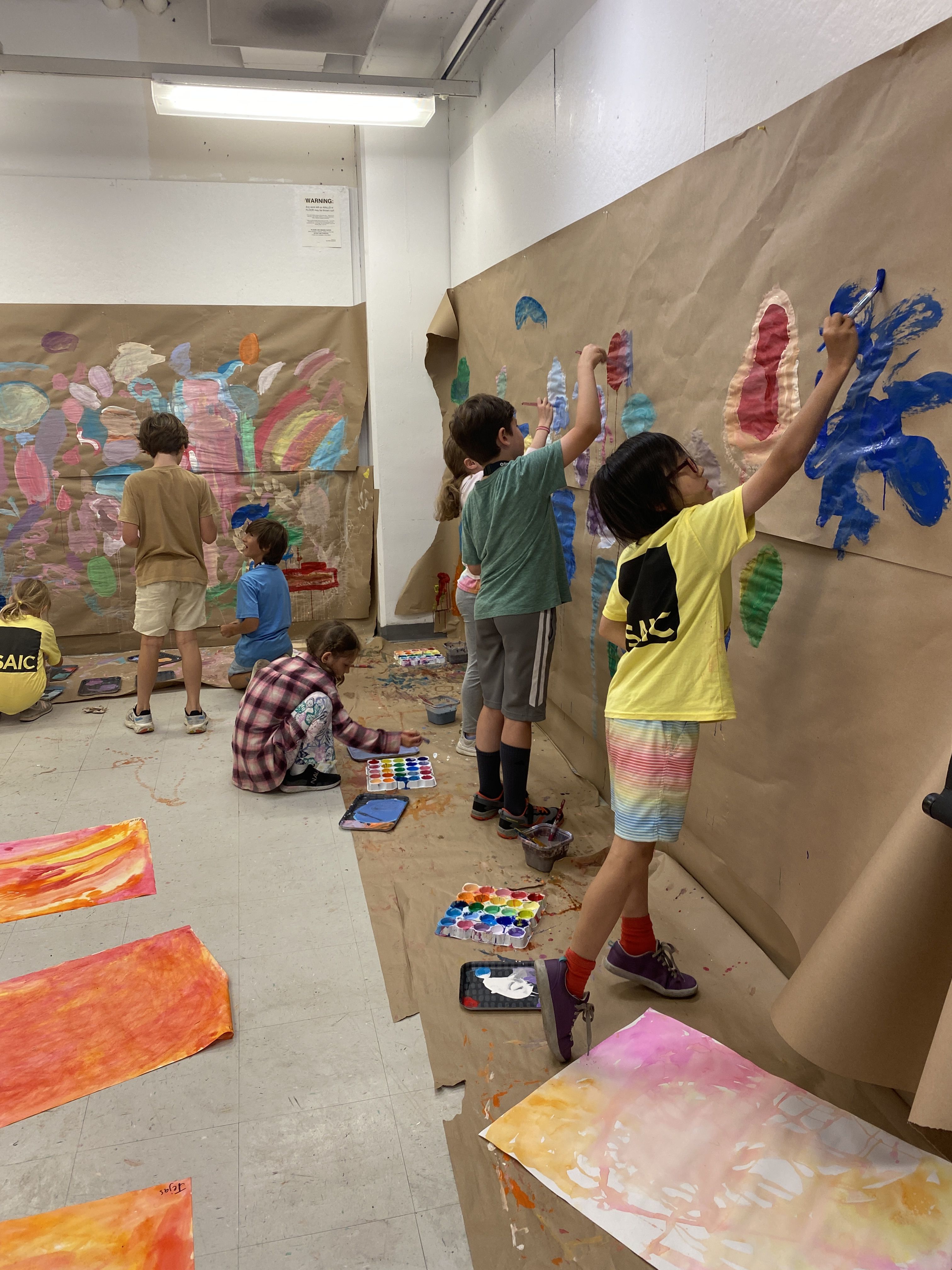
by Micco Caporale (MA 2018)
When summer in Chicago gets into full swing, a few things are always true: cookouts will become fierce battlegrounds over what’s acceptable to put on a hot dog, the city will host more music festivals than anywhere else in the country, and the School of the Art Institute of Chicago (SAIC) will welcome hundreds of children on breaks from school into its many Multi-Arts Camps.
Meghan Rose (BFA 2008) and Ömürhan Alptekin-Torres know the routine well. Every year, the veteran art instructors spend the season co-teaching classes for the School's youngest artists-in-training, introducing students to basic ideas like color theory and line weight and showing them the museum as both an archive and source of inspiration.
This summer, they were paired together for two weeks to explore myths and monsters in art with a class of eight- and nine-year-olds. Together, they got to watch students soar.
Together, the students pieced together a large collaborative mural.
Together, the students pieced together a large collaborative mural.
Rose and Alptekin-Torres began the course with a discussion about what could happen when you combine disparate creatures. Which features and traits would a character retain? What would they lose? How might one combination influence an animal's behavior differently from another? For one project, students learned about Jacques Cousteau and imagined themselves as undersea explorers in a submarine. They created painted collages based on what they imagined discovering with their periscopes. But their biggest project began almost immediately: an enormous butcher-paper mural, from which everyone got to keep a piece.
"It became a symbol of their collective creativity," Alptekin Torres said, "and a testament to the power of art to bring people together."
Students created a mural on butcher paper, and at the end, everyone got to take home a piece.
Students created a mural on butcher paper, and at the end, everyone got to take home a piece.
After teaching art in the Chicago Public School system for 15 years, Rose has found collaborative projects work well for this age group. They help build soft skills, like communication and adaptability, while fostering a sense of camaraderie that helps everyone develop their creative voice—even kids who don't typically think of themselves as artists. Alptekin-Torres, who works with a nonprofit teaching art to people with disabilities during the year, relishes watching students' imaginations kick into overdrive at the Art Institute, where works like Alma Thomas's Starry Night and the Astronauts—a painting that shows a tiny but meticulous burst of red, orange, and yellow dots interrupting a field of darker and lighter blue dots—demonstrated the emotive power of abstraction and simplicity. In addition to Western traditions like the Cubists and Surrealists, students also learned about Native American and African art and some of the myths and monsters specific to those cultures. This gave them a breadth of influences when developing their own pieces.
The camp was only two weeks, but those weeks were intense. Students completed an amount of work similar to what they'd produce over a nine-month school year. But the mural gave them a common focus.
"It became a symbol of their collective creativity," Alptekin Torres said, "and a testament to the power of art to bring people together."
The class stands in front of their completed mural.
The class stands in front of their completed mural.
"Since the pandemic," Rose explained, "I've noticed kids struggling a little bit to transition from their home environment, where they can be more independent. Many kids are still getting the hang of being in a group setting where there's a lot of different personalities and needs going on."
After a trip to the butterfly garden at the Stock Exchange Arch, images of the insects began appearing all over the mural. Some campers dove deep into learning about their life cycles and migration habits while others feverishly looked for art across multiple cultures to compare and contrast how the bugs were regarded and rendered. When the camp came to a close, students had more than eight artworks to show for their time. With one of those being a piece of their collective creation, each student was left with a physical reminder of how they helped one another emerge from their creative cocoons. ■

